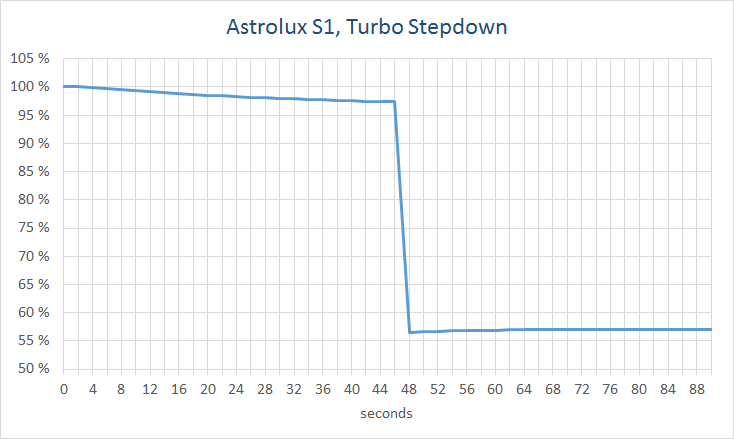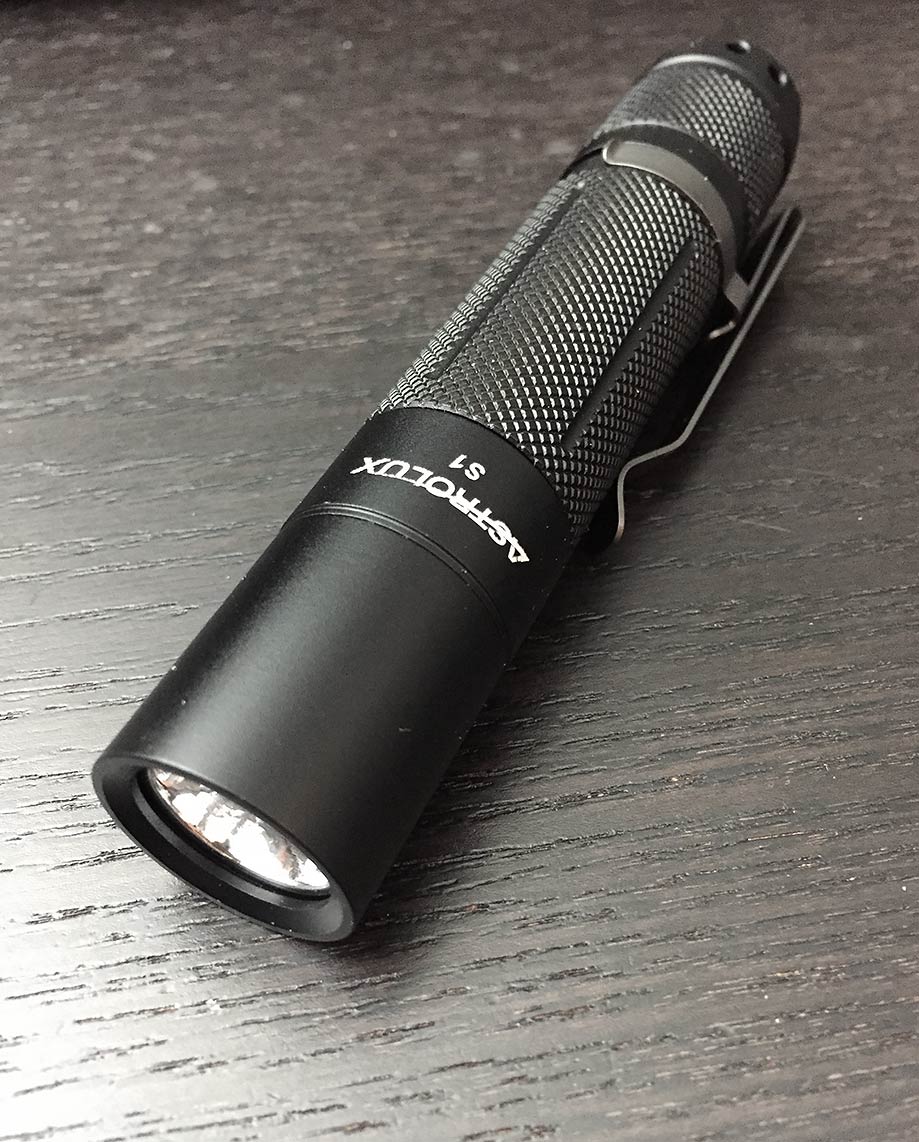
Astrolux S1 is better known as the BLF Manker A6 (Special Edition). The rebranded version is supposed to be identical to the A6 that was put together by BLF forum members. It has an advanced driver with extensive functions. Read more about the firmware and operation at http://toykeeper.net/torches/blf-a6/final/blf-a6.txt
The Astrolux S1 differs from the original in that it comes with a 18350 battery tube to shorten the light. The aluminum finish is excellect for the price (currently $30). A lanyard and a non-reversable pocket clip are included as well as two extra o-rings for the 18350 tube. There's also a spare tailcap switch.
S1 weighs 76 grams with the 18650 tube and 55 grams in the 18350 form. Dimensions are 121/88,2 mm x 24 mm.
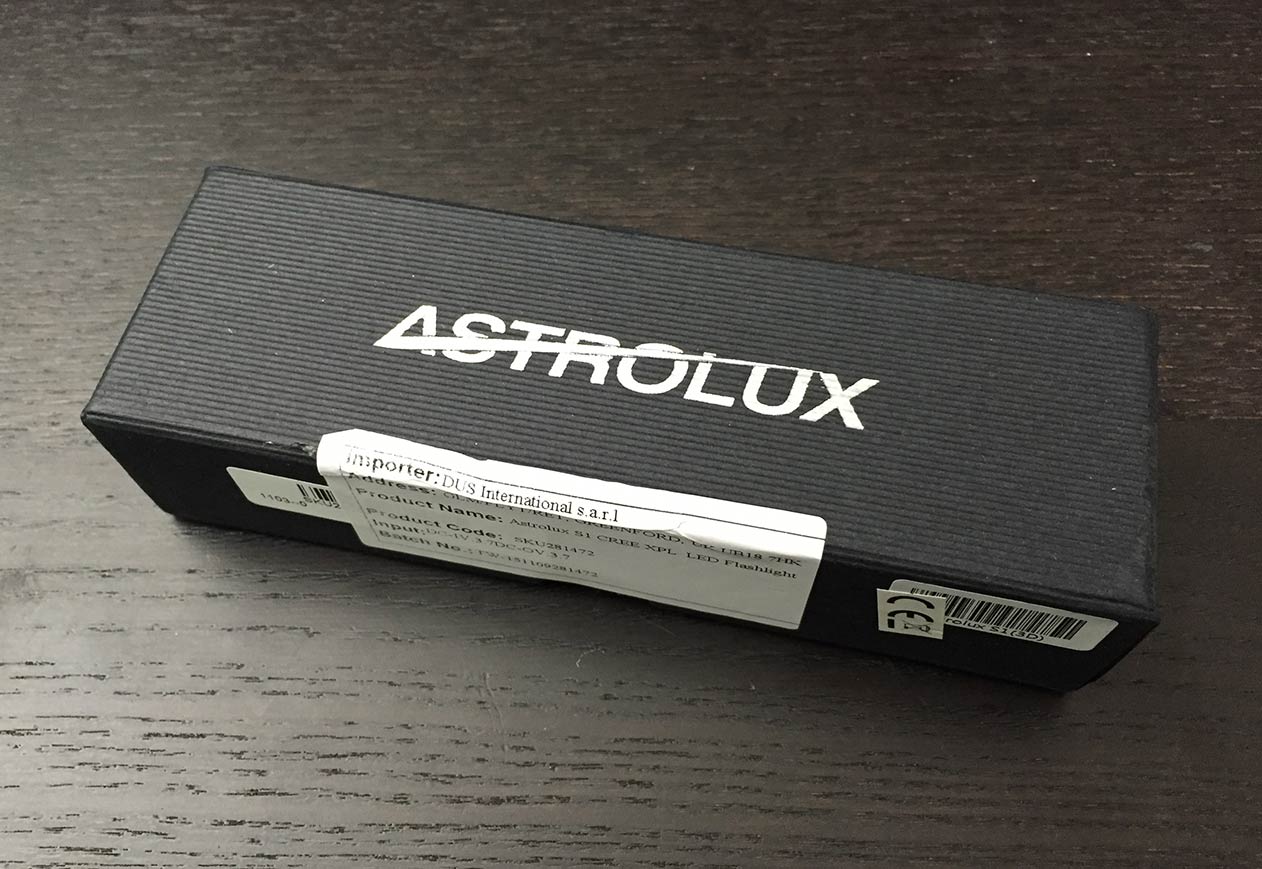
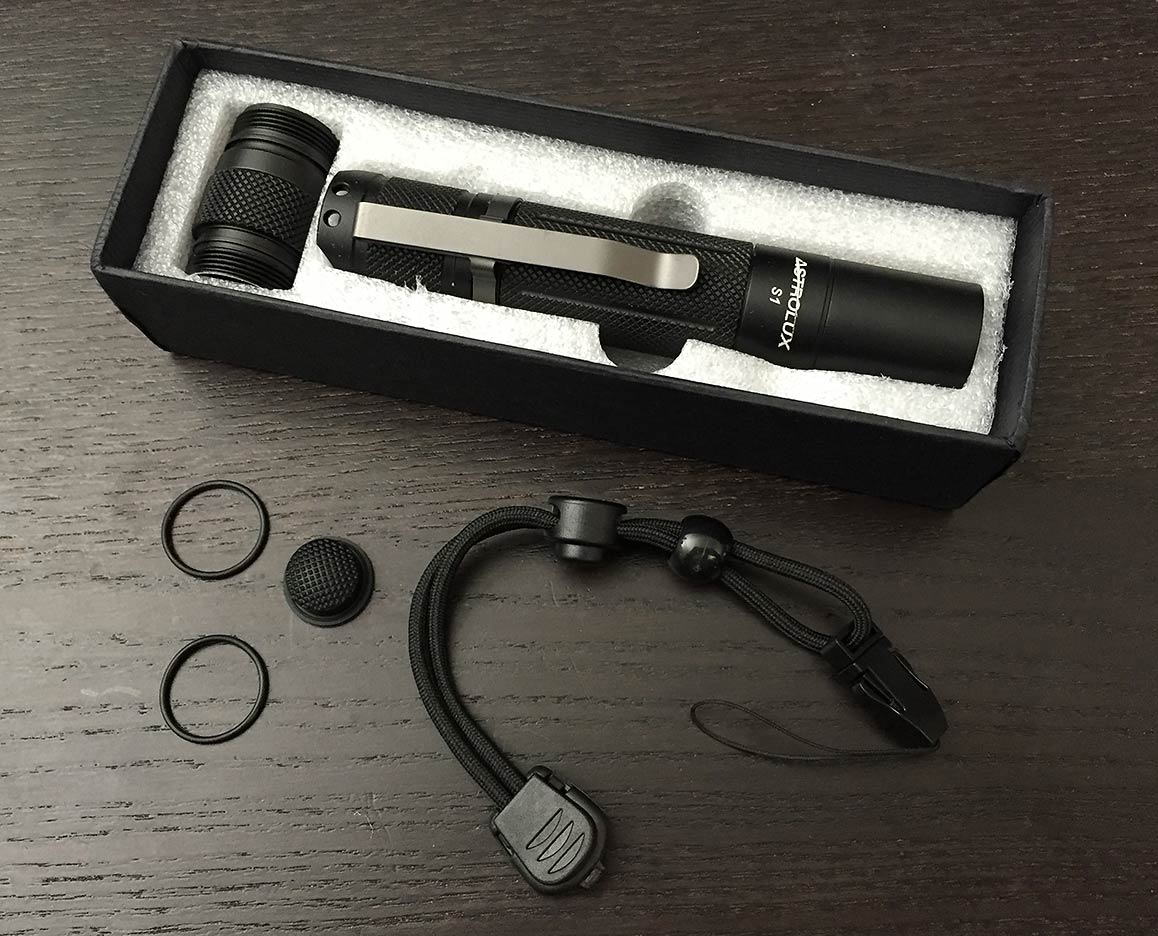
The light has a claimed output of 1400-1600 lumens in direct drive turbo. This can be achieved with a spring bypass and using high current 18650 batteries. I only managed about 1000 in the stock form with the batteries I had on hand (Eagtac 3500 mAh, Sanyo NCR18650BL, LG MH1). Turbo mode steps down to High 2 after 45 seconds.
The rubber switch is located in the tailcap. Deep press activates and shuts down the light and half presses (taps) switch modes. Longer half press cycles the modes backwards. In total there are 4 or 7 modes depending on how the user has programmed the light.
In group 1 the modes are Moonlight - Low - Medium 1 - Medium 2 - High 1 - High 2 - Turbo. In group 2: Low - Med - High - Turbo. Special modes (10 Hz strobe, battery check, biking flasher) can be accessed from the moonlight mode with a 0,5-1,0 second tap (cycle backwards). I accidentally named the lowest mode firefly and not moonlight in the images, I'll fix it later.
The emitter is Cree XP-L with a choice of three tints: 1A (6500 K), 3D (5000 K), 5A (4000 K). The light I tested is the 3D variant.
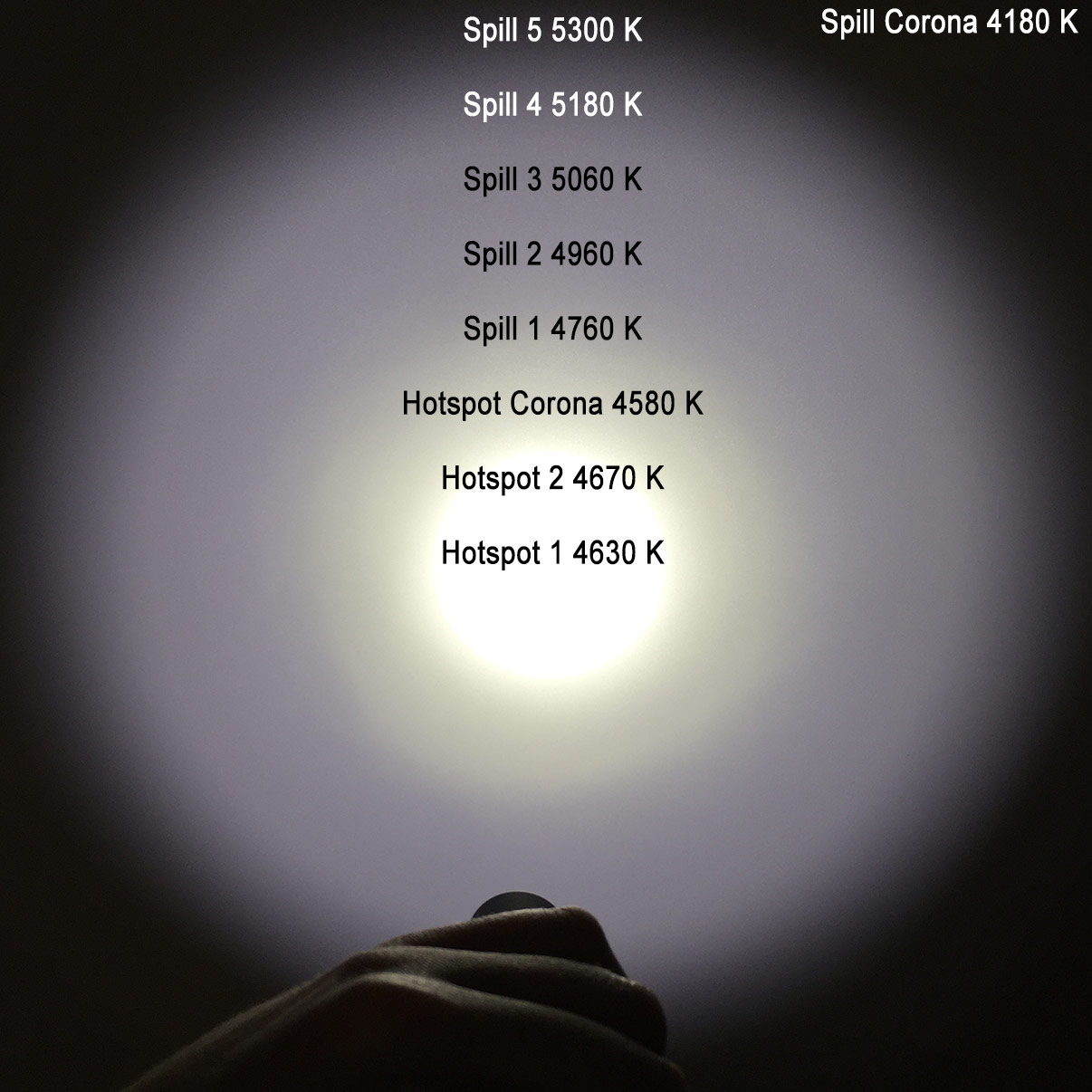
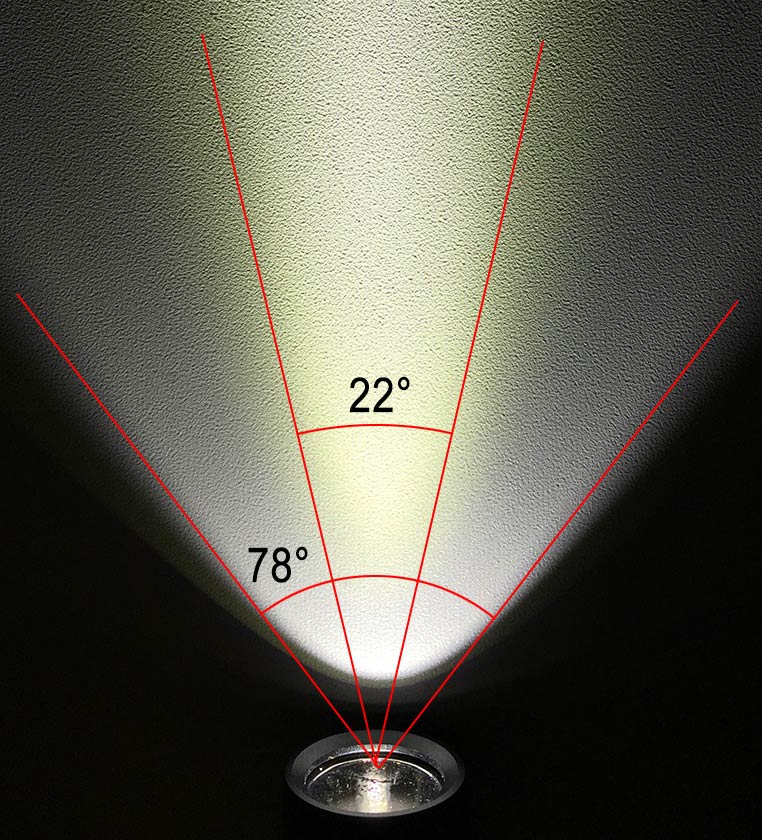
The beam angle is 78° with a hotspot of 22°. Color temperature is noticeably cooler in the spill area and greenish around the hotspot. I wouldn't call the beam beautiful tint wise, but the hotspot isn't too bad.
There is PWM in all modes but turbo, but it is not visible even to the most sensitive people. The switching frequency is high and the output doesn't drop to zero as is the case with traditional PWM. So no worries there.
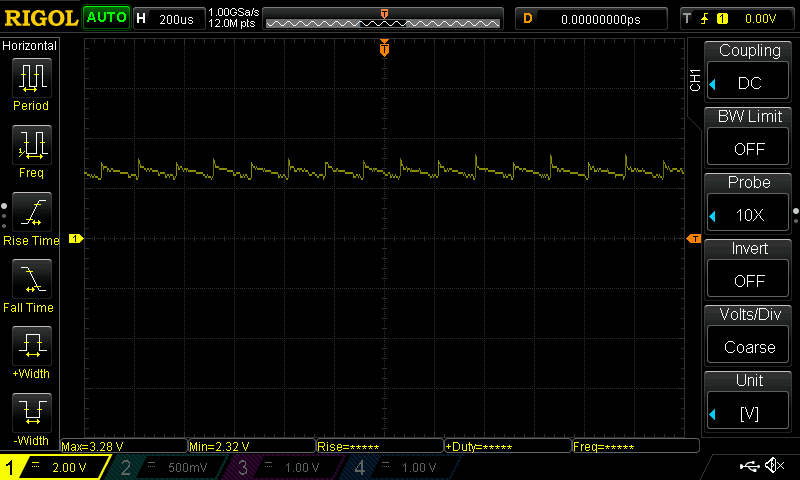
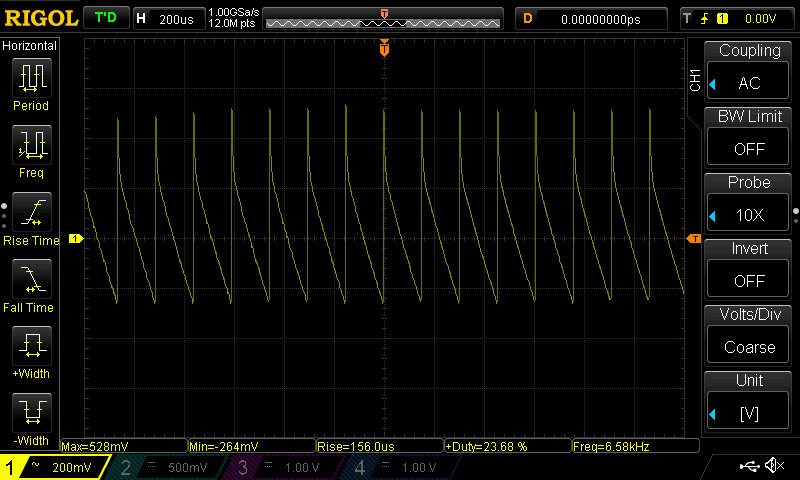
Because of high frequency and narrow modulation PWM is invisible to the eye even in moonlight mode. Top: absolute (DC coupling, horizontal center line 0 lumens), bottom: zoomed in (AC coupling)
See all the scope screenshots here:
http://imgur.com/a/xsere
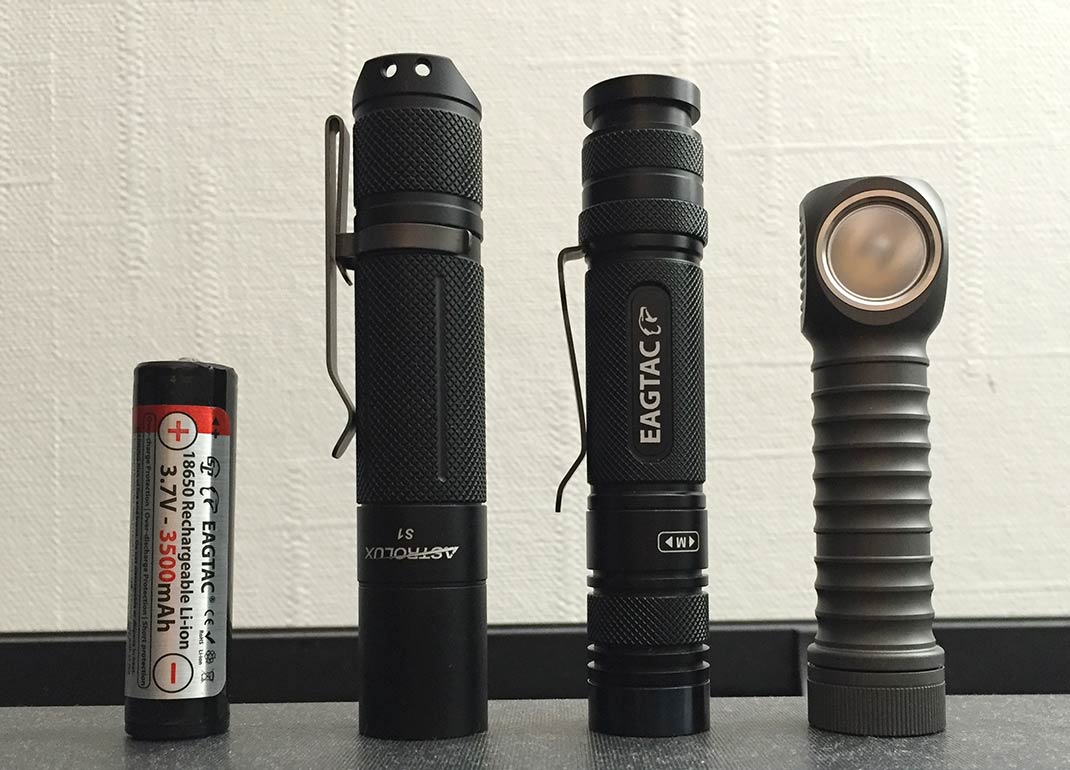
18650 battery, Astrolux S1 (18650 tube), Eagletac D25LC2, Zebralight H600Fd III
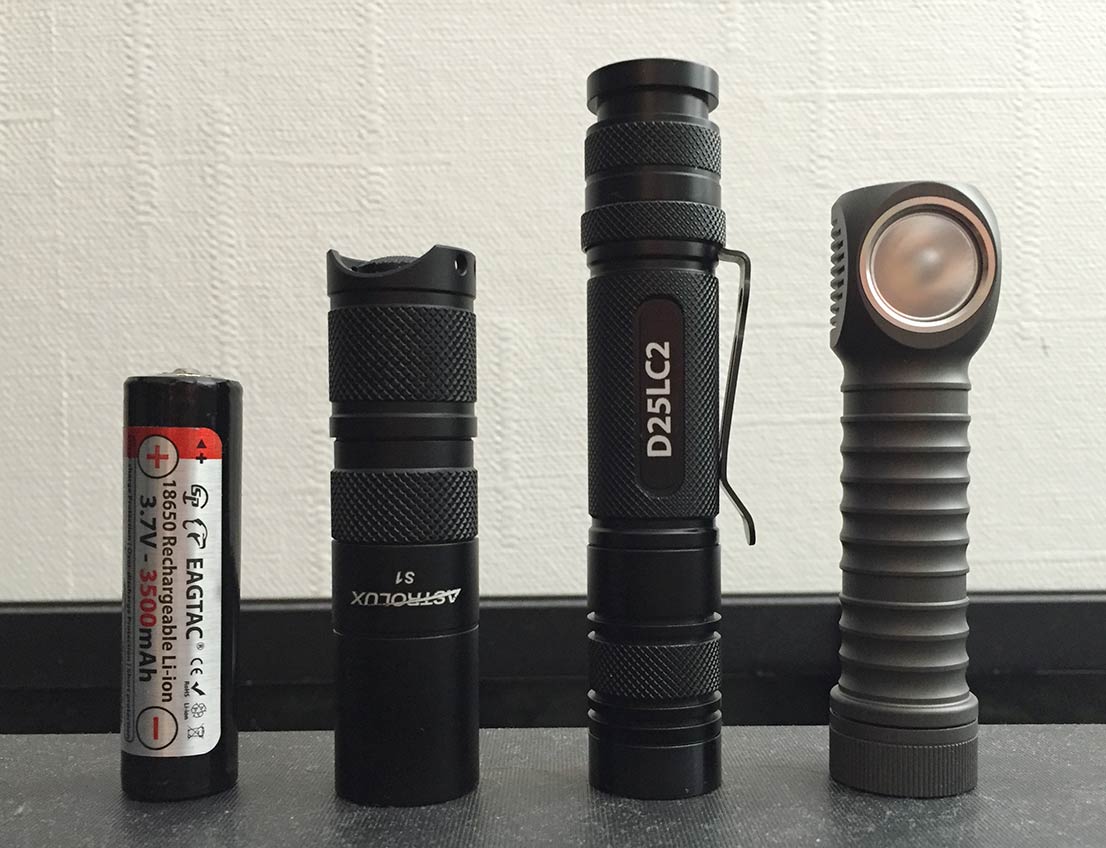
18650 battery, Astrolux S1 (18350 tube), Eagletac D25LC2, Zebralight H600Fd III
Measurements
Please note: lumen measurements are only rough estimates
My diy 30 cm integrating styrofoam sphere has been calibrated using a Fenix E05 on high with manufacturer's claim of 85 lumens. Verified with an Olight S10 that has been measured with a Labsphere FS2 integrating sphere by valostore.fi. Results may be more inaccurate with especially throwy or floody lights.
For spectral information and CRI calculations I have an X-rite i1Pro spectrophotometer with HCFR for the plot and ArgyllCMS spotread.exe for the data. For runtime tests I use spotread.exe with a custom script and a i1Display Pro because it doesn't require calibration every 30 minutes like the i1Pro.
Explanation of abbreviations
CCT = correlated color temperature, higher temperature means cooler (bluish)
CRI (Ra) = color rendering index consisting of 8 different colors (R1-R8), max value 100
CRI (R9) = color rendering index with deep red, usually difficult for led based light sources, max value 100
TLCI = television lighting consistency index, max value 100
x,y = coordinates on a CIE 1931 chart
(Updated 31.1.2016)
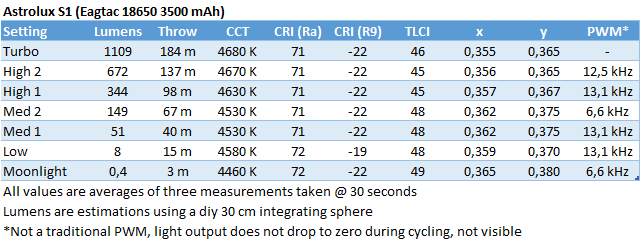
Spectral distribution
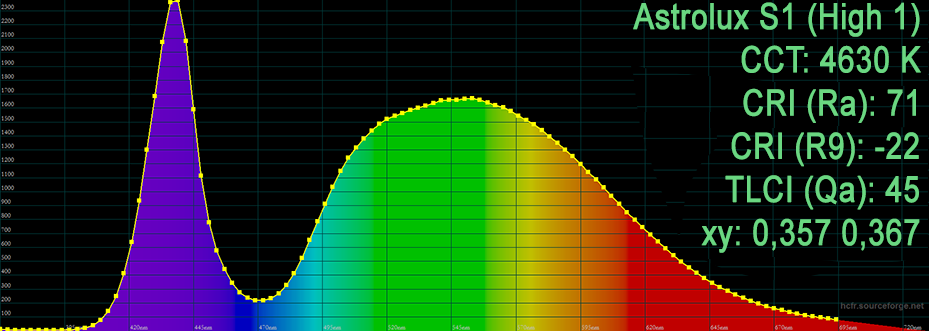
Color renering (Turbo)
See explanations here: http://www.candlepowerforums.com/vb...CRI-vs-alternatives-with-measurement-examples
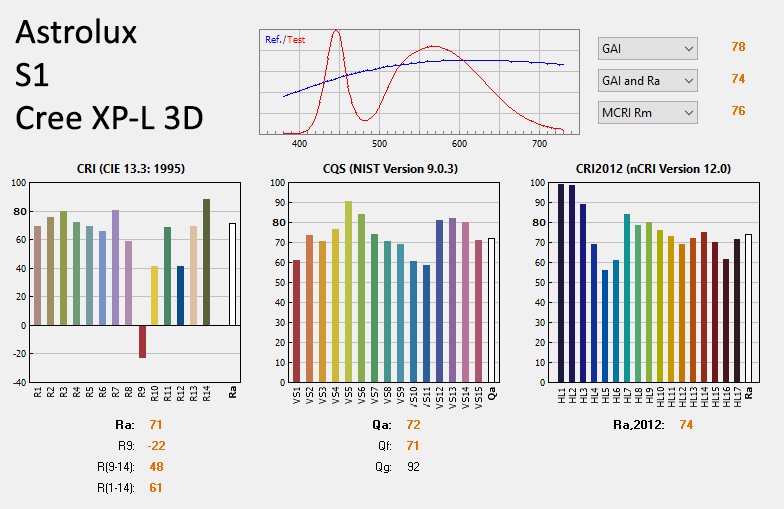
Tint
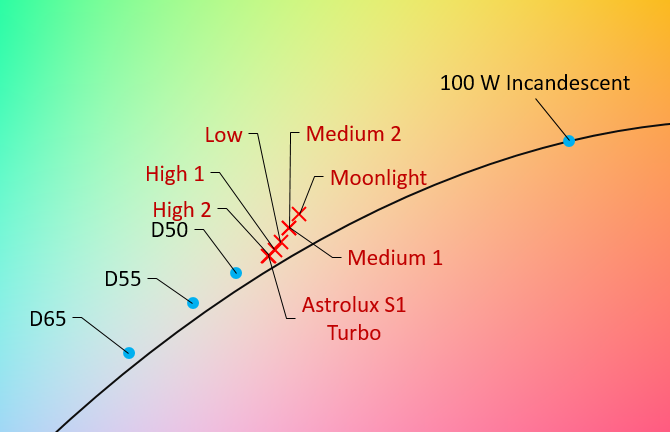
Different brightness modes
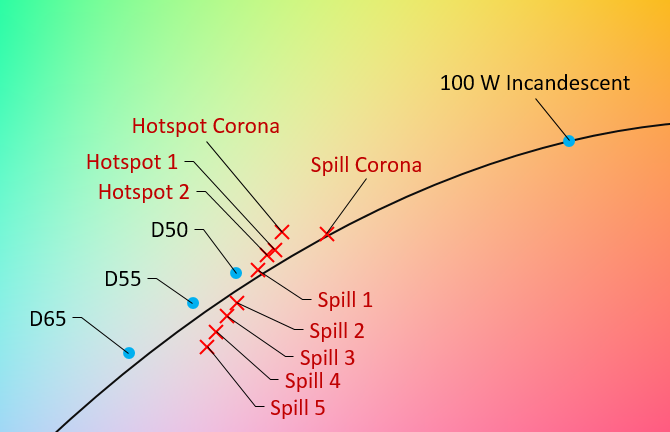
Tint towards the edge of the spill.
Runtime (Turbo & High 1)
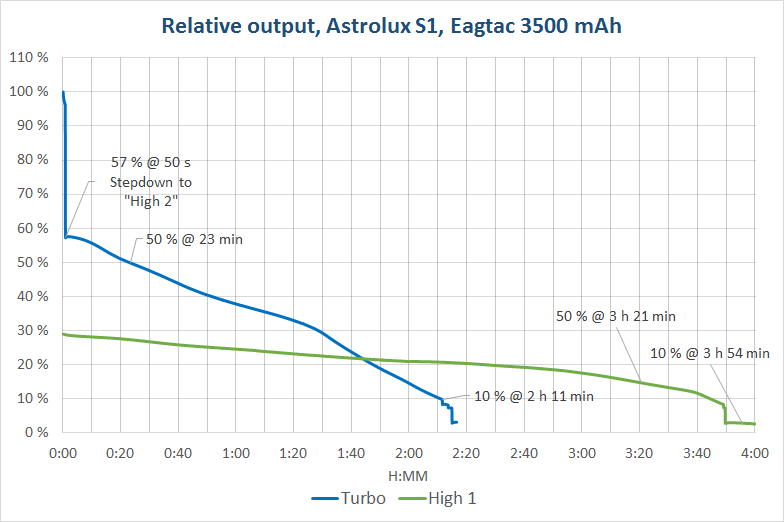
The light steps down to High 2 after 50 seconds, so I didn't measure High 2 separately.
Zoomed in
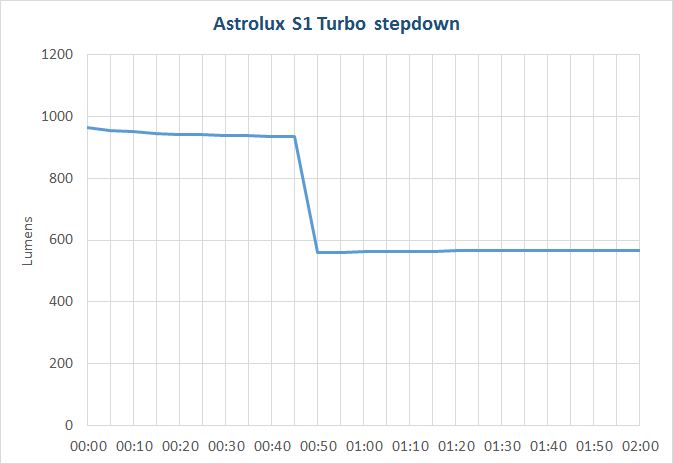
First two minutes on turbo.
Temperature
The light gets quite hot in Turbo/High 2. When running without a fan I measured 54°C on the head @ 5 minutes and 62°C @ 10 minutes. Grip was 53°C @ 10 minutes. I consider anything over 50°C uncomfortable to hold with bare hands for more than a couple of seconds.
After turning on a fan @ 12 minutes, the head dropped under 50°C in 3 minutes while the grip temp had decreased down to 44°C.
Thermal imaging of the first 5 minutes
https://youtu.be/fdAU7SE2-sU
Last edited:


